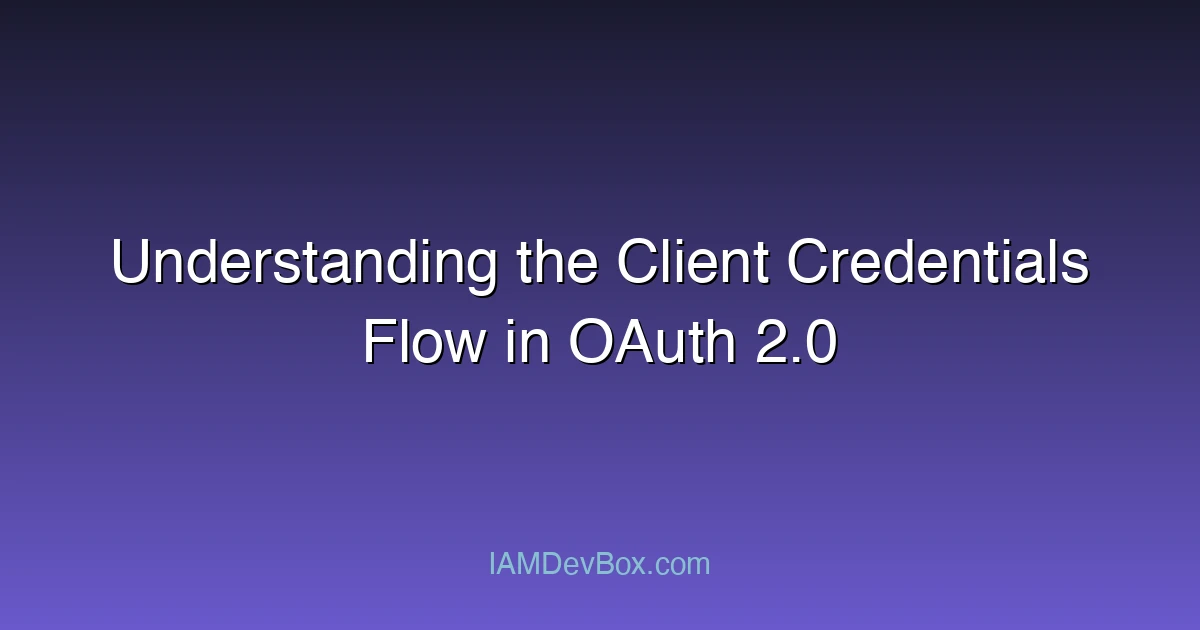Visual Overview:
sequenceDiagram
participant App as Client Application
participant AuthServer as Authorization Server
participant Resource as Resource Server
App->>AuthServer: 1. Client Credentials (client_id + secret)
AuthServer->>AuthServer: 2. Validate Credentials
AuthServer->>App: 3. Access Token
App->>Resource: 4. API Request with Token
Resource->>App: 5. Protected Resource
OAuth 2.0 is a widely used authorization framework that enables applications to obtain limited access to user accounts on an HTTP service. Among its several grant types, the Client Credentials Flow is uniquely designed for machine-to-machine (M2M) communication where no user is involved.
What is the Client Credentials Flow?
The Client Credentials Flow is used when applications (typically backend services, daemons, or microservices) need to access resources or APIs on their own behalf, rather than on behalf of a user. This flow is ideal for internal services, automation scripts, or server-to-server communication where the resource owner is the application itself.
Unlike other OAuth 2.0 flows, such as the Authorization Code or Implicit flows, there is no user interaction or redirection involved in the Client Credentials Flow.
When to Use the Client Credentials Flow
Use this flow when:
- You are building a service that needs to authenticate and call APIs or other services without user interaction.
- You want to secure backend-to-backend communication.
- The resource being accessed is not user-specific but rather owned by the application.
How the Flow Works
Here is a step-by-step breakdown of the Client Credentials Flow:
-
Client Authentication: The client (application) authenticates itself to the authorization server using its
client_idandclient_secret. -
Token Request: The client sends a
POSTrequest to the authorization server’s/tokenendpoint with the following parameters:grant_type=client_credentialsclient_id=<client_id>client_secret=<client_secret>- Optionally,
scope(to request specific permissions)
-
Token Response: If authentication is successful, the authorization server responds with an access token (usually a JWT) and its metadata, such as expiration time.
-
Resource Access: The client includes the access token in the
Authorization: Bearerheader of its request to the resource server. If valid, the resource server grants access to the requested resources.
Example Token Request
POST /oauth2/token HTTP/1.1
Host: authorization-server.com
Content-Type: application/x-www-form-urlencoded
grant_type=client_credentials&
client_id=your-client-id&
client_secret=your-client-secret&
scope=read:data
Example Token Response
{
"access_token": "eyJz93a...k4laUWw",
"token_type": "Bearer",
"expires_in": 3600
}
Security Considerations
-
Secure Secrets: Keep the
client_secretsecure. Never expose it in frontend applications. -
Use TLS: Always use HTTPS to prevent sensitive data from being intercepted.
-
Rotate Secrets: Periodically rotate
client_idandclient_secretpairs. -
Limit Scope: Only request the minimum scope necessary for operation.
Common Use Cases
- Microservices calling internal APIs
- CRON jobs or automated scripts needing API access
- CI/CD pipelines interacting with protected resources
- Backend service integrations (e.g., accessing cloud provider APIs)
Conclusion
That’s client credentials flow. Simple, secure, no users involved. Perfect for service-to-service auth.
